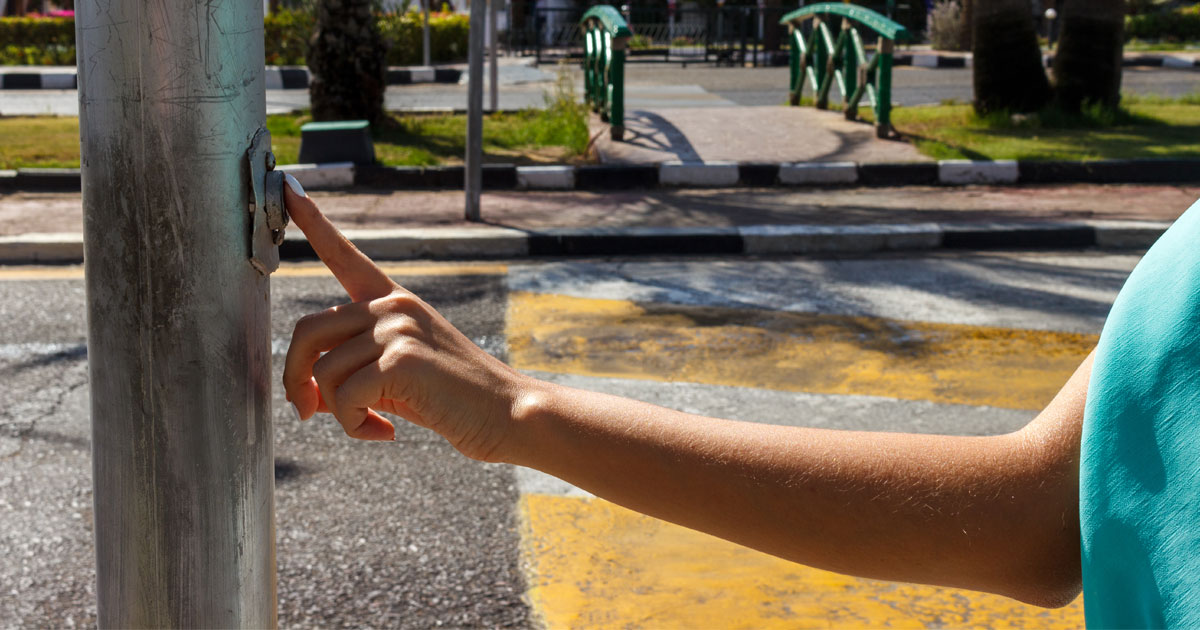The goal of motor vehicle safety technology is to make road travel safer for all road users. Recent advances in vehicle safety technology have included sensors and automatic response systems to prevent car accidents, including collisions with pedestrians.
Among the detection systems that help prevent road accidents, car manufacturers have added lane departure detection systems and adaptive cruise control to keep cars from crashing into one another on highways and other high-traffic areas. Another detection and auto-response system that is crucial for preventing accidents is automatic emergency braking (AEB) systems. Many of these braking systems have the ability to detect and react to the presence of pedestrians on residential streets and in other walkable settings.
These pedestrian-recognition AEB systems have shown promise, reducing pedestrian traffic deaths significantly since the technology was introduced. However, a recent study by the Insurance Institute for Highway Safety (IIHS) shows that although pedestrian-sensing AEB systems have reduced pedestrian car accidents overall, the technology is lacking in its effectiveness to prevent such crashes after dark. This is especially significant when considering that up to 75 percent of accidents that kill pedestrians occur at night.
How Do AEB Systems Detect Pedestrians and Prevent Accidents?
AEB systems with pedestrian detection can identify pedestrians with the use of cameras and radar sensors. Some systems use a combination of the two. When a pedestrian steps into the vehicles path, the sensors will detect their presence and warn the driver. The AEB system will automatically engage the vehicles brakes to avoid a crash.
How Serious Is the Problem of Pedestrian Accidents?
The IIHS data shows that car accidents killed 6,205 pedestrians in 2019. That same year, an additional 76,000 pedestrians were injured by motor vehicles. The data collected over previous 10 years shows that pedestrian deaths had risen 51 percent since 2009.
How Effective Are AEB Systems with Pedestrian Detection?
The IIHS study concluded that AEB systems made no difference in the rates of pedestrian accidents that occurred in nighttime conditions. When vehicles with the pedestrian safety technology were compared with vehicles that lacked a pedestrian-detecting AEB system, the study found that although the reduction in daytime accidents was significant among the AEB-equipped vehicles, the incidence of nighttime pedestrian accidents were the same whether or not vehicles had pedestrian-detecting automatic safety capabilities.
Researchers looked at accident data from 1,500 accidents involving several 2017 to 2020 vehicle models. They compared pedestrian crash rates for vehicles that were identical except for the presence or absence of pedestrian-detection safety technology. The study examined the lighting conditions present at the times of the crashes as well as other factors such as vehicle speed, crash severity, and whether the vehicle was turning. Researchers also considered the quality of vehicles headlights and the ages of the drivers involved in the accidents.
Lighting conditions made a difference whether the light was natural and artificial, the study found. The pedestrian detection and AEB technologies brought daylight crash rates down by 32 percent. Artificial lighting at dawn and dusk allowed for a crash reduction rate of 33 percent.
Although the study indicated that having an AEB system with pedestrian detection technology reduced the incidence of pedestrian car accidents by 27 percent under all conditions and caused a 30 percent decrease in pedestrian crashes that resulted in injury, the data also showed that the use of the pedestrian-detection safety technology made no difference on nighttime roads without streetlights.
Interestingly, the technology does not seem to affect pedestrian safety on roads with speed limits over 50 miles per hour. Likewise, the technology does not seem to be effective when the vehicle is turning.
How Will Pedestrian Road Safety Be Affected by the Studys Findings?
The IIHS, made up of motivated members of the car insurance industry, has a clear interest in mitigating the dangers of motor vehicle travel and promoting ways to achieve road safety goals for drivers and all other road users.
The revelations of the study indicate that the influential agency will begin to put pressure on car manufacturers to improve the nighttime capabilities of pedestrian detection and AEB systems. This pressure will come in the form of holding out on auto industry safety awards, which influence consumer perception and, therefore, automobile sales.
Much as the agency took a forward-looking role in testing the systems daytime proficiency, the IIHS will continue to incorporate the effectiveness of new nighttime technologies into its vehicle testing and rating structures.
The IIHS has already begun testing pedestrian detection in small SUVs on dark road conditions. The tests, which involve models from eight different manufacturers, evaluated each vehicles pedestrian detection capabilities using low-beam headlights as well as the high-beam setting.
The tests showed that the vehicles that performed best in the dark had pedestrian detection systems that involved both cameras and radar detection. This is not surprising, since lighting conditions do not affect radar detection. Interestingly, however, the radar-only system tested highest in nighttime conditions, but worst during the day.
Middletown Car Accident Lawyers at Mikita & Roccanova Help Clients Injured in Car Accidents at Night
If you were hurt in a car accident at night, you may be eligible to receive compensation from the at-fault driver or from some other liable party. The Middletown car accident lawyers at Mikita & Roccanova can help you piece together what happened and who is liable. Our experienced legal team can help you understand your rights and help you recover the damages for which you are entitled. Call us at 732-705-3363 or contact us online today to schedule a free consultation. Located in Hazlet and Highland Park, New Jersey, we serve clients throughout Ocean County, Sussex County, Neptune, Middlesex County, and Pennsylvania.


